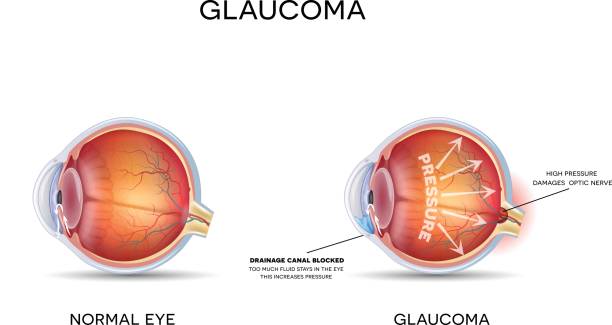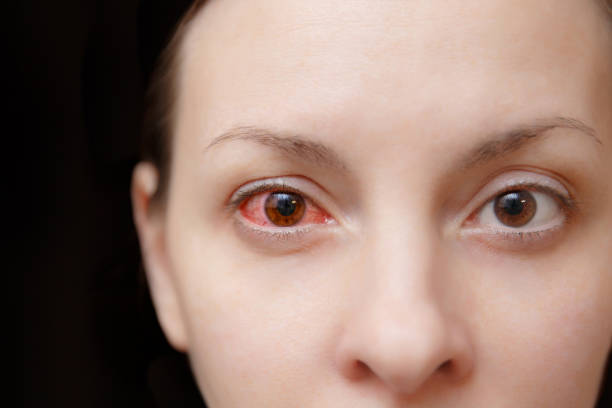Our eyes are essential for almost every part of daily life, so taking care of them is very important. Many people face common eye problems, but the good news is that many of these issues can be prevented or treated. In this blog post, we will talk about some common eye problems, their symptoms, and how you can prevent them. Keeping your eyes healthy is key to enjoying life without eye problems.
1. Dry Eyes
Dry eyes happen when your eyes don’t produce enough tears or when the tears evaporate too quickly. This can make your eyes feel uncomfortable, scratchy, or even burn. Dry eyes are more common as we get older, and they can also be caused by staring at a computer screen for too long, living in a dry climate, or using certain medications.
Symptoms of Dry Eyes:
- Itchy, scratchy feeling in the eyes
- Redness in the eyes
- Sensitivity to light
- Blurred vision
- Feeling like there’s something in your eye
How to Prevent Dry Eyes:
- Blink frequently: This helps spread moisture across your eyes.
- Use a humidifier: If you live in a dry climate, a humidifier can add moisture to the air, which helps prevent your eyes from drying out.
- Stay hydrated: Drinking plenty of water keeps your body and eyes hydrated.
- Take breaks from screens: Follow the 20-20-20 rule: every 20 minutes, take a 20-second break and look at something 20 feet away.
2. Eye Strain

Eye strain is a very common issue, especially with the amount of time we spend in front of screens. It happens when your eyes become tired from focusing for long periods. If you’ve ever spent hours reading a book or working on a computer, you might have felt the effects of eye strain. Symptoms can include headaches, blurry vision, and neck or shoulder pain.
Symptoms of Eye Strain:
- Headaches
- Blurry or double vision
- Sore eyes or neck
- Difficulty focusing
- Tired or heavy eyelids
How to Prevent Eye Strain:
- Follow the 20-20-20 rule: As mentioned earlier, taking regular breaks helps give your eyes a rest.
- Adjust screen brightness: Make sure the brightness of your computer or phone matches the lighting around you.
- Maintain proper posture: Sit at a comfortable distance from the screen, with the top of the screen at or slightly below eye level.
- Use proper lighting: Avoid bright overhead lights or glare that can make it harder to see.
3. Cataracts
A cataract is a clouding of the lens in your eye, which can lead to blurry vision. Cataracts are most common in older adults, but they can develop for other reasons too, such as injury or certain medical conditions. Over time, cataracts can make it harder to see clearly, affecting daily activities like reading, driving, or recognizing faces.
Symptoms of Cataracts:
- Blurry or cloudy vision
- Difficulty seeing at night
- Sensitivity to light
- Fading or yellowing of colors
- Frequent changes in glasses prescription
How to Prevent Cataracts:
- Wear sunglasses: Protect your eyes from harmful UV rays that can increase the risk of cataracts.
- Don’t smoke: Smoking is a major risk factor for cataracts.
- Eat a healthy diet: Foods rich in antioxidants like fruits and vegetables can help protect your eyes from cataracts.
- Regular eye check-ups: Early detection and treatment can help prevent cataracts from affecting your vision.
4. Glaucoma

Glaucoma is a group of eye diseases that damage the optic nerve, often due to high pressure inside the eye. It can cause vision loss, but you may not notice it until the damage is severe. Early detection and treatment can help prevent serious vision problems.
Symptoms of Glaucoma:
- Loss of peripheral (side) vision
- Blurry vision
- Eye pain or headaches
- Red eyes
- Nausea or vomiting (in severe cases)
How to Prevent Glaucoma:
- Get regular eye exams: Glaucoma often has no symptoms in its early stages, so it’s important to get your eyes checked regularly, especially if you’re over 40 or have a family history of the disease.
- Manage your health: Conditions like high blood pressure or diabetes can increase the risk of glaucoma, so it’s important to stay on top of your health.
- Follow your doctor’s advice: If diagnosed with glaucoma, it’s crucial to follow your doctor’s treatment plan to control eye pressure.
5. Macular Degeneration
Macular degeneration is an age-related condition that affects the central part of your vision. It occurs when the macula, which is the part of the retina responsible for sharp, central vision, starts to deteriorate. While macular degeneration doesn’t cause total blindness, it can make tasks like reading or driving difficult.
Symptoms of Macular Degeneration:
- Blurry or wavy vision
- Difficulty seeing fine details
- Dark or empty areas in the center of vision
- Trouble adjusting to low light
How to Prevent Macular Degeneration:
- Eat a healthy diet: Foods high in antioxidants, such as leafy greens, fish, and nuts, are good for eye health.
- Don’t smoke: Smoking can increase the risk of macular degeneration.
- Wear sunglasses: Protect your eyes from UV rays to reduce the risk of damage to the macula.
- Maintain a healthy weight: Obesity is a risk factor for macular degeneration, so staying fit can help protect your vision.
6. Conjunctivitis (Pink Eye)

Conjunctivitis, commonly known as pink eye, is an infection or inflammation of the outer layer of your eye (the conjunctiva). It can be caused by viruses, bacteria, allergies, or irritants. While pink eye is not usually serious, it can be uncomfortable and highly contagious.
Symptoms of Conjunctivitis:
- Redness in the white part of the eye
- Itchy or watery eyes
- Discharge or crusting around the eyes
- Sensitivity to light
How to Prevent Conjunctivitis:
- Wash your hands frequently: Avoid touching your eyes, and wash your hands often to prevent the spread of germs.
- Avoid sharing personal items: Don’t share towels, makeup, or eye drops with others.
- Keep your eyes clean: Gently clean your eyelids and eyelashes with a warm, damp cloth to remove any discharge or buildup.
7. Eye Infections
Eye infections can be caused by bacteria, viruses, or fungi and can lead to discomfort, redness, or vision issues. Infections may affect different parts of the eye, including the cornea, conjunctiva, or eyelids.
Symptoms of Eye Infections:
- Redness or swelling in the eyes
- Pain or discomfort
- Watery or thick discharge
- Blurred vision
How to Prevent Eye Infections:
- Practice good hygiene: Wash your hands regularly and avoid touching your eyes.
- Use clean makeup brushes and contact lenses: Disinfect contact lenses and replace them as recommended.
- Avoid sharing eye products: Never share eye makeup or other personal items that can transmit germs.
Conclusion
Taking care of your eyes is essential to preserving your vision and overall quality of life. By staying aware of common eye problems and practicing simple preventative measures, you can reduce the risk of developing serious eye issues. Regular eye exams are crucial, and maintaining a healthy lifestyle through a balanced diet, exercise, and proper hygiene can help keep your eyes healthy for years to come. Always consult with your eye doctor if you notice any changes in your vision.

